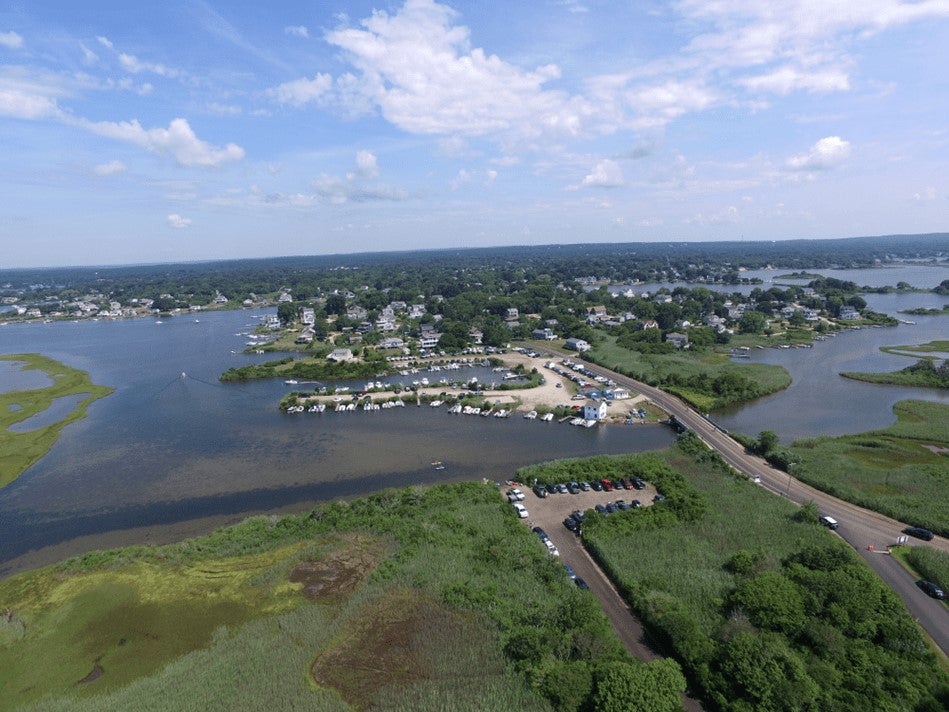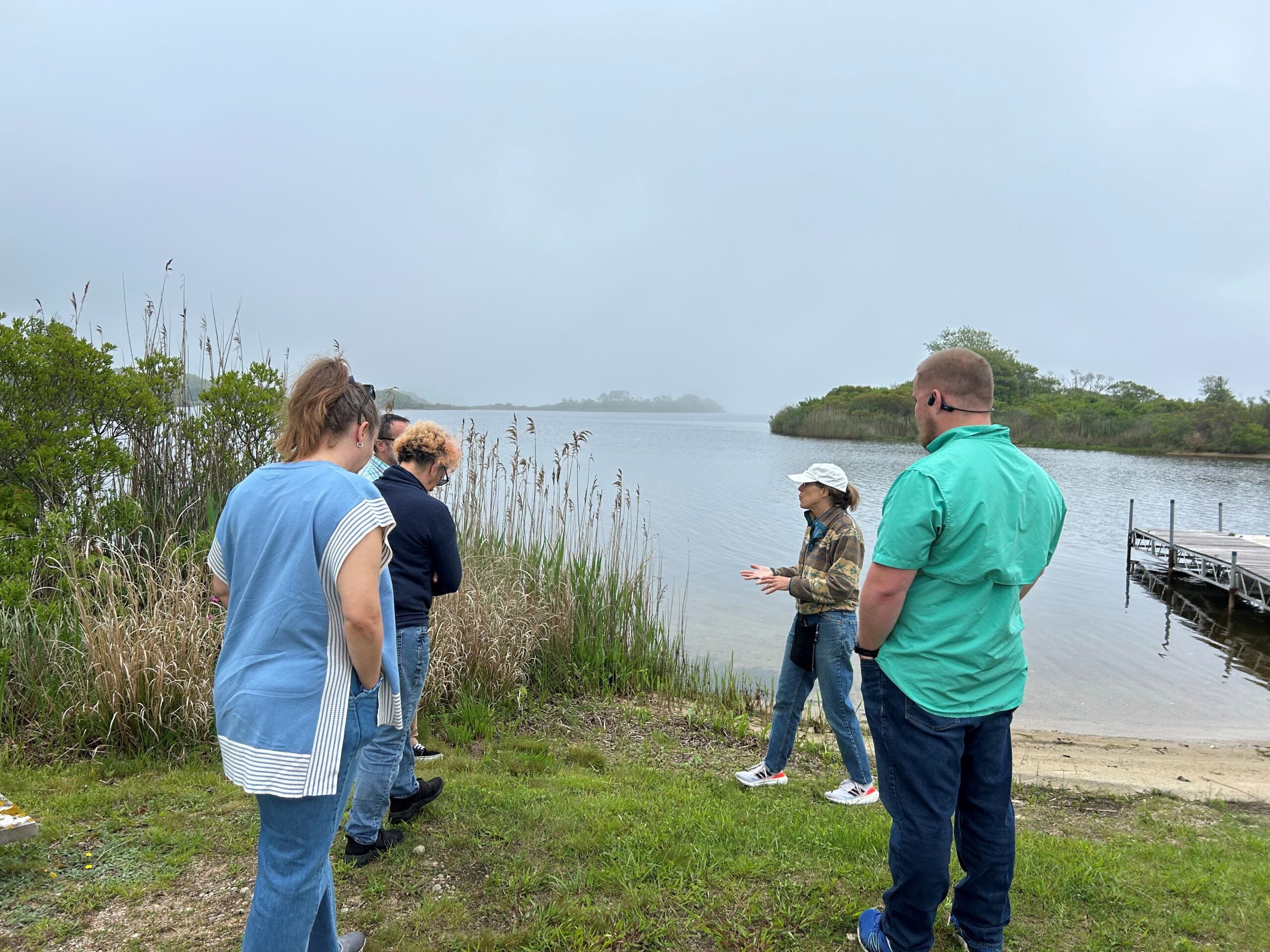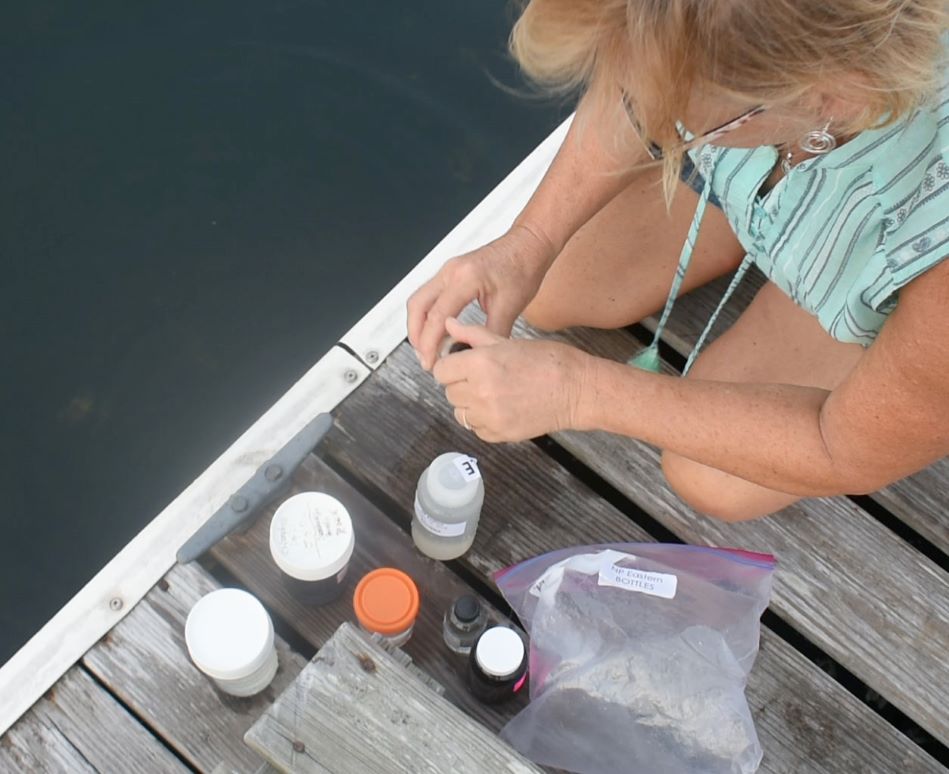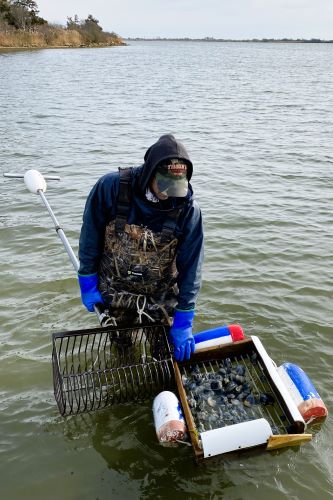Do Your Part, Be Salt Pond Smart
Do you live on or near one of RI Coastal Salt Ponds? Did you know each pond supports a variety of coastal habitats and wildlife, and provides valuable services that support both tourism and fishery industries in Rhode Island? Help protect one of our state’s most valuable natural resources by choosing to live Salt Pond Smart! Together, homeowners living along Rhode Island’s south shore can learn something new, share resources and take action to protect and improve the water quality in their favorite pond.
About the Program
Salt Pond Smart is a new and innovative program to educate, support and recognize homeowners’ efforts to protect and improve water quality in RI Coastal Salt Ponds. This grant-funded program is voluntary and there is no fee to participate at this time.
RI Coastal Salt Ponds are vulnerable to surrounding land use practices. Excess nutrients (e.g., nitrogen), bacteria, and other contaminants carried in surface and groundwater from septic systems,  excess fertilizer use and unmanaged animal waste can lead to shellfish closures, excess growth of algae and nuisance aquatic plants, and swimming advisories. Water quality in our ponds is also threatened by the loss of natural coastal vegetation at the pond’s edge.
excess fertilizer use and unmanaged animal waste can lead to shellfish closures, excess growth of algae and nuisance aquatic plants, and swimming advisories. Water quality in our ponds is also threatened by the loss of natural coastal vegetation at the pond’s edge.
Salt Pond Smart participants can help! Everyday property management choices – whether you live along the pond or miles away – can help prevent these contaminants from reaching the salt ponds from surface water flow or groundwater. Homeowners enrolled in the Salt Pond Smart program are taking action to properly maintain their septic system and learn about system upgrades, implement sustainable landscaping practices, and manage stormwater on their properties to reduce pollution in nearby salt ponds. Together, we can improve water quality and work to restore the health of the ponds, so that current residents and future generations can enjoy our beautiful salt ponds.
Funding for Salt Pond Smart is provided by a U.S. Environmental Protection Agency (USEPA) Southeast New England Program (SNEP) grant for the Greater Allen’s Cove and Eastern Ninigret Pond Pilot Watershed Project.
Photo Credits:
- Kayaking: Lisa Hollister, Program Manager, Onsite Wastewater Resource Center
- Quahogging: Phil Moreschi, Charlestown Resident
- Aerial Photo: Stephen McCandless, GIS Coordinator, Town of Charlestown
- Shoreline Consultation: Kristen Hemphill, Environmental Scientist, Town of Charlestown
- Water Sampling: Alicia Schaffner, Director, Salt Ponds Coalition
How Does It Work?
 If you live in a coastal area that drains to one of our salt ponds, you are eligible to join Salt Pond Smart. Once enrolled, you will complete training to learn more about septic system maintenance and upgrades, sustainable landscaping choices and stormwater management. After completing the training, you will assess your property and document existing salt pond-friendly choices or make adjustments to your property management to be (more) Salt Pond Smart! Once all criteria have been met, your property will be certified as Salt Pond Smart. To recognize your good stewardship, you’ll receive a sign you can put on your property to display your Salt Pond Smart status – which might also spark conversations with your neighbors and encourage more people to do their part to protect our ponds!
If you live in a coastal area that drains to one of our salt ponds, you are eligible to join Salt Pond Smart. Once enrolled, you will complete training to learn more about septic system maintenance and upgrades, sustainable landscaping choices and stormwater management. After completing the training, you will assess your property and document existing salt pond-friendly choices or make adjustments to your property management to be (more) Salt Pond Smart! Once all criteria have been met, your property will be certified as Salt Pond Smart. To recognize your good stewardship, you’ll receive a sign you can put on your property to display your Salt Pond Smart status – which might also spark conversations with your neighbors and encourage more people to do their part to protect our ponds!
Who can participate?
Anyone residing within the Salt Ponds or Narrow River Watersheds (designated as Critical Resource Areas by the RIDEM) is eligible to participate in Salt Pond Smart, although priority will be given to residents living in the Greater Allen’s Cove and Eastern Ninigret Pond Pilot Watershed. Not sure if your home is part of the Salt Ponds or Narrow River Watersheds? Visit our Enroll Now page for an interactive map to find your property and determine its eligibility! Living outside of the Salt Ponds or Narrow River Watersheds, but still interested in septic system maintenance and upgrades, sustainable landscaping choices and stormwater management? Our curated Resources are for everyone!
Getting Started
It’s easy! Visit our Enrollment page to check your eligibility and complete your registration!
EnrolL NOWCertification Criteria
Salt Pond Smart’s certification criteria are backed by science – researchers at URI and Watershed Watch, and their community organization partners including the Salt Ponds Coalition and Save the Bay have been studying and documenting water quality in southern RI’s coastal ponds for decades.

Water Infrastructure
Human wastewater presents the largest threat to the quality of our local groundwater and nearby salt ponds. Advanced septic system technologies and routine maintenance of all septic systems are critical to reducing the amount of pollution we are adding to our ground and surface waters each day. Many Rhode Islanders living along the coast also rely on groundwater for their drinking water supply, so knowing about your well or water system and associated best practices is important for protecting your health.
Sustainable Landscaping Practices
Reducing fertilizer, pesticide, herbicide and water use to maintain your lawn and gardens is another way to help keep our waters clean. Planting drought-tolerant and native species on your property, making small adjustments to your lawn care practices, and composting safely are small steps everyone can take each day to save money and be more Salt Pond Smart!
Stormwater Management
When it rains, pollution on the ground and other impervious surfaces (any surface that does not allow water to penetrate, such as paved driveways and roads) is carried along by stormwater until it reaches the nearest surface water or pond. Keeping all the rain that falls on your property in place and allowing it to be filtered by the soil reduces the amount of pollution entering our salt ponds, while also recharging local groundwater. Making sure wildlife and pet waste stays out of our waters is another important step to ensuring our ponds are healthy. If you live right on the pond, consider adding native coastal plants at the shoreline to trap and filter contaminants in stormwater before they reach the water.
Training and Certification
During the certification process, you’ll learn more about each of these topics by completing a series of five online training modules (including an overview of the salt ponds, drinking water, wastewater, sustainable landscaping and stormwater management modules). This content is only available to enrolled participants. Each training module will tell you more about the problem but focus on providing you with actions to take on your property to help protect the salt ponds! After completing the training, you will answer a series of questions in each category and document salt pond-friendly practices on your property. We will guide you in collecting and submitting materials to document the best practices you currently engage in on your property, or changes you make following training. Documentation may include photographs or drawings, redacted receipts (e.g. septic pumping), and plans or other public information about your property available online (e.g. septic system permit). Properties that meet all of the minimum requirements in each category will earn a “Silver” Salt Pond Smart designation on their certification and yard sign, while properties that showcase additional, high-impact best practices will earn a “Gold” designation on their certification and yard sign.
As Salt Pond Smart grows, we look forward to incorporating volunteer opportunities and other ways to engage our neighbors and community members in the certification process.
Resources for Everyone
Not ready to enroll yet, or perhaps you live outside of our project area? Our curated Resources are available to anyone looking for more information to help protect water quality. We have compiled relevant websites, factsheets, and more resources from many great sources for anyone to explore the following topics:

